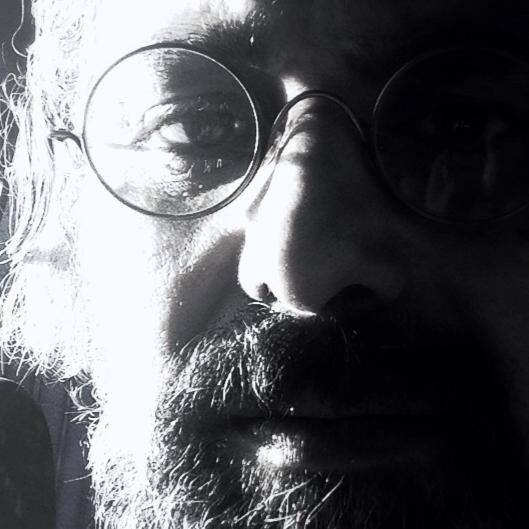Social Bewildering
by burkey1010
This work has been commented by 4 curator(s). Read the comments
Title
Social Bewildering
Headline
Social Bewildering
Concept author(s)
Nathan Burke
Concept author year(s) of birth
1995
Concept author(s) contribution
all of it. Solo project.
Concept author(s) Country
Australia
Friendly Competition
Competition category
Visual communication practice
Competition subcategory
moving
Competition field
nonacademic
Competition subfield
artist
Subfield description
Its a short film. I want it seen online.
Check out the Pleasure 2016 outlines of Memefest Friendly competition.
Description of idea
Describe your idea and concept of your work in relation to the festival outlines:
The concept is to show what people would be like if they treated dated forms of communication like a smartphone. the pleasure in the numbing sensation of social media.
What kind of communication approach do you use?
Short film.
What are in your opinion concrete benefits to the society because of your communication?
Its to make people think about how ridiculous a social can be. turning people into lifeless zombies.
What did you personally learn from creating your submitted work?
Video editing skills as well as composition.
Why is your work, GOOD communication WORK?
because it gives just enough information to put the pieces together without giving them to much.
Where and how do you intent do implement your work?
i want it to be seen on smartphones so you mimic the actions in the video. Platforms like youtube would work for that.
Did your intervention had an effect on other Media. If yes, describe the effect? (Has other media reported on it- how? Were you able to change other media with your work- how?)
nothing so far.
Curators Comments

Kevin Yuen-Kit Lo
Hi Nathan,
your video is extremely well-executed and creates a very ominous reflection of our relationship to technology and social media. It really highlights how powerfully smartphone technology has affected our physical bodies, the repetitive and addictive gestures, etc. and how unconsciously we perform them. The scripting, direction, editing, effects, and sound, all work very well together to convey your message. I really like the slow build and how the distortion takes over at the end, achieving a strong narrative effect.
The main criticism I have is related to the basic premise of associating current behaviour with "outdated" technology. I don't feel that this really adds much in terms of meaning, and could in fact add confusion, and the video could have been made using smartphones and laptops and would have had as much, if not more impact.
I also wonder about the title and use of the term "bewilderment". It doesn't seem quite accurate, and perhaps, in relation to this year's theme, Pleasure might have made a more potent contrast. The social connection and pleasure that smartphones bring is THE most prominent way they are marketed, groups of people, doing all sorts of things, and highlighting this contrast with actual rote behaviour would have been very effective.
This being said, your video makes a powerful critical contribution to this year's memefest and I look forward to seeing more of your work.

Scott Townsend
I really appreciated the video-- I think the biggest challenge is how to strategize something like this directly into the smartphone touchpoint in a way that changes behavior rather than being an ironic reference as it is now.
For example, if someone was to go to Youtube to view the video, they would be in a receptive and reflective mind-set. The actual default behavior of using social and other media is usually in moments when we escape from our physical environment and look for distraction. If the video was displayed as some kind of 2-3 second interstitial that interrupted that behavior, the user might be more conscious of their actions.

Antonio Rollo
Children of Evidence (a 1995 short film by Godfrey Reggio) have grown in front of the television. The television was reduced to palm. I saw Social Bewildering with my smartphone, acting, as in Nathan's intentions, in this new sphere where is the screen that moves, while my body, in most cases, remains stationary. The repetition of the gesture, if on the one hand determines a perceptual distortion of reality, the other leads to a common destiny in the millions of interconnected people. The TV picture could be "changed", the image that comes from the network must be stirred. The body participates in the audio-vision building. According to Sherry Turkle (Alone Together, 2001) provides for the future an even greater participation of the body with the screen, just that in his vision, the screen disappears, replaced by the robot: “These young people have grown up with sociable robot pets, the companions of their playrooms, which portrayed emotion, said they cared, and asked to be cared for. We are psychologically programmed not only to nurture what we love but to love what we nurture. So even simple artificial creatures can provoke heartfelt attachment. Many teenagers anticipate that the robot toys of their childhood will give way to full-fledged machine companions. In the psychoanalytic tradition, a symptom addresses a conflict but distracts us from understanding or resolving it; a dream expresses a wish. Sociable robots serve as both symptom and dream: as a symptom, they promise a way to sidestep conflicts about intimacy; as a dream, they express a wish for relationships with limits, a way to be both together and alone.”
Roderick Grant
This is a good premise to undermine our interaction with smartphones as a form of medicated pleasure. The deconstruction of the smartphone into its various forms of media - radio, video, tele-communicative, and tele-gram of a sort (notifications), are all dealt with in strong documentary voice.
The constitution of the film as a documentary makes me wonder about taking the film out of its online context and into other media or situations - bus stops, train stations, places where small moments of idle time see us consume - with and without pleasure - small bits of media through our phones. What might these interventions look like? Would we need another kind of prompt, like a question, a challenge to our constant smartphone use? I'd actually like to see this attempted - both in the potential still form, an in the motion...that might be harder, but a projection on an outdoor train station would be a visually striking presence...especially if the characters are turned into multiple projections in multiple locations.
The subtle, but building distortion of the film is well handled, and could perhaps go further, or introduce another kind of message beyond the formal/visual - text, another image fighting to come in "behind" the initial footage. Perhaps the arrival of the new image reveals a new kind of behaviour, a new kind of sound...there's great potential in the work to move beyond these initial gestures, which are quite well developed as a complete cinematic experience.
I guess what I'm hinting at would be called "expanded cinema" - introducing the work into media channels and locations that perhaps make us uncomfortable, or are at least unexpected. Doug Aitken certainly attempted such constructions in his work Interiors and Migrations, moving the audience into a specially built room/rooms for the viewing of his works. I think defaulting to YouTube doesn't give the work a chance to do all it might be capable of doing...so there's huge room here for further experimentation.
Formally, the work deserves praise for the visual composition and patience to make the work as well crafted as a digital artifact - it has a designed edge that is compelling, and a precision of movement and change of camera-eye that flows well from sequence to sequence. The attention given to both capture and editing deserves comment for treating the media with a sure-handed method that enables the viewer to grasp both the formal quality, and the visual comparison and analysis/critique inherent in the work.
